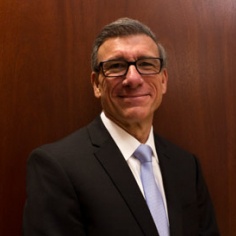Megasessions vs. Smaller Sessions – Which Is Better?
I’ve been reading a lot about megasessions on the internet. Some clinics are offering 5000 or more grafts in one sitting. I’d love to have my hair transplant finished in one shot, but I also read that this can be dangerous since many of the grafts will not survive. Do you think it’s better to do a couple of smaller sessions or can these megasessions really be performed with today’s technology?
Although there are no scientific studies to assess graft survival with “ultra” mega sessions consisting of 5000 or more grafts, a few clinics seem to have the capability to achieve these large sessions with apparently, good results. Without question, as the number of grafts per session increases, the need for strict, impeccable quality control within the clinic staff becomes essential and there are clear-cut reasons for this. The longer that the grafts are out of the body, the greater the potential for inadvertent dehydration of the grafts, which is known to be lethal to the follicles. Also, with longer out of body times, it is even more critical to maintain the solution in which the grafts are kept , at a cold temperature for proper preservation. There may be other, unknown factors which may come in to play, such as, increasing acidity over time or, other changes of the graft holding solution which may also affect survival. In this regard, there is a need to develop more sophisticated graft storage solutions for effective preservation of these follicles in longer procedures. With longer operative times there is also a greater potential for staff fatigue in the graft dissection and graft- placement phase of the procedure and therefore an increased risk of mechanical trauma to the follicles, which can also affect growth.
Aside from quality control and human factors, a study performed by Dr. Bobby Limmer in 1992 showed that, as the “out of body time” for the grafts increases (even if the grafts are kept hydrated in cold saline solution), the percent of grafts which survive decreases. His data showed that at two hours the survival was 95%, at four hours 90% and at six hours 88%.
Other things to consider when evaluating these large sessions include: 1) inquire as to the number of hairs that are going to be transplanted, not just the number of grafts. Hair grows naturally in the scalp in tiny groups which we call follicular units and contain 1, 2, 3 and rarely 4 hairs . The basis for follicular unit transplantation is to maintain these natural groupings and only separate them if one needs additional single hair grafts for a specific purpose, like hairline reconstruction. If a significant number of the follicular units are “split” so that each graft contains less hairs on average, you may be receiving a large number of grafts but, certainly, not a correspondingly large number of hairs. This “graft splitting” has been termed “sub- follicular unit” grafting and clouds the issue as to what you are really getting. Not everyone is a candidate for “ultra” mega sessions since some individuals have tight donor areas which do not allow a wide – enough strip to be removed in one session to yield these large graft numbers. Another concern with the larger sessions pertains to the young patient, in whom the eventual baldness pattern is not established. It is recognized that someone who develops extensive male pattern baldness has approximately 5000 to 7000 follicular units that can be transplanted from the donor area in their lifetime. This, of course is a generalization and individual differences do exist. Nevertheless, using most of the available donor supply in one procedure leaves little reserves for future use, as the balding pattern continues over time.
Aside from these considerations there are a few reputable practitioners who report very good results with these very large sessions and it is crucial to carefully select a physician who takes your individual case into consideration before making a recommendation as to how many grafts are appropriate. Aside from asking questions pertaining to the issues which I have outlined above, it is extremely important to ask how many of these large sessions the surgeon has performed , try to meet other patients who have had a large procedures performed by the physician in question, and critically examine their “before” photographs to assess results.
Obviously the whole issue of surgeon selection becomes overwhelmingly critical when considering the sessions, since a significant portion of your lifetime donor supply is ” on the line”.
Find A Surgeon
The International Alliance of Hair Restoration Surgeons is a consumer organization that selectively screens skilled and ethical hair transplant surgeons. The IAHRS does not offer an open membership policy to doctors practicing hair transplatation, and is the only group that recognizes that all surgeons are not equal in their skill and technique. Its elite membership seeks to represent the best in the discipline, the true leaders in the field of surgical hair restoration.
